11 Jan 2018 - {{hitsCtrl.values.hits}}
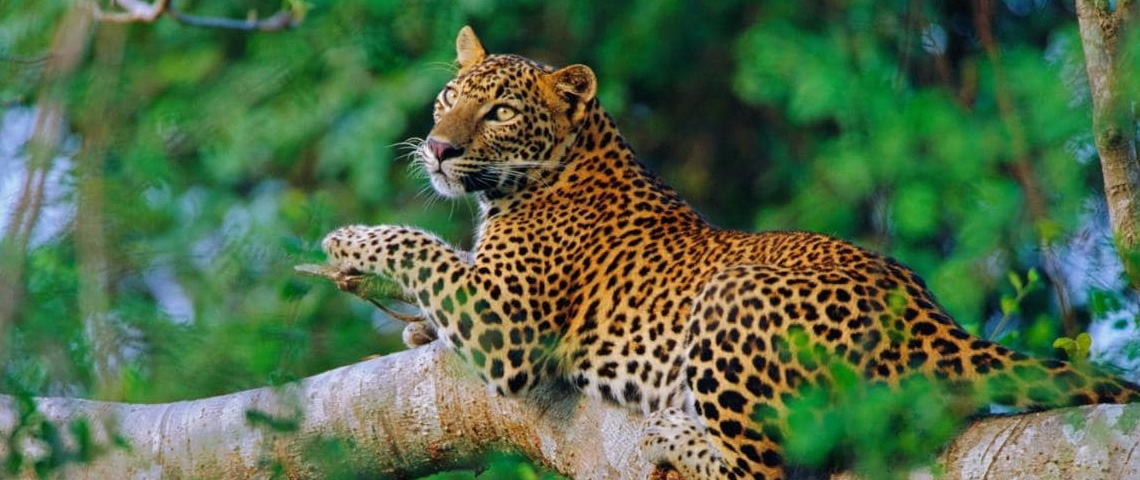
 With a tawny or rusty yellow coat, dark spots and close-set rosettes, the Panthera pardus kotiya or the Sri Lankan leopard in other words continues to dominate the food chain in different habitats of the island. Although there’s a recorded number of over 700 leopards currently living in Sri Lanka, the animal is usually a seldom seen species on nature trails, unless you are lucky to spot those spots! Recent footage of a leopard pouncing on village folk in Hatton went viral on electronic and social media which was interpreted in different ways. “When comparing Sri Lanka with India, we have five incidents per year when compared to 800 incidents per year in India,” says Anjali Watson, founding trustee and primary researcher of The Wilderness and Wildlife Conservation Trust (WWCT). Along with her husband Dr. Andrew Kittle (zoologist and ecologist), the duo has conducted ecological research on the leopard in multiple locations across the country.
With a tawny or rusty yellow coat, dark spots and close-set rosettes, the Panthera pardus kotiya or the Sri Lankan leopard in other words continues to dominate the food chain in different habitats of the island. Although there’s a recorded number of over 700 leopards currently living in Sri Lanka, the animal is usually a seldom seen species on nature trails, unless you are lucky to spot those spots! Recent footage of a leopard pouncing on village folk in Hatton went viral on electronic and social media which was interpreted in different ways. “When comparing Sri Lanka with India, we have five incidents per year when compared to 800 incidents per year in India,” says Anjali Watson, founding trustee and primary researcher of The Wilderness and Wildlife Conservation Trust (WWCT). Along with her husband Dr. Andrew Kittle (zoologist and ecologist), the duo has conducted ecological research on the leopard in multiple locations across the country.
The caught up with these two enthusiastic researchers who shed light on the broader concerns of conservation and coexistence of humans and leopards in Sri Lanka.
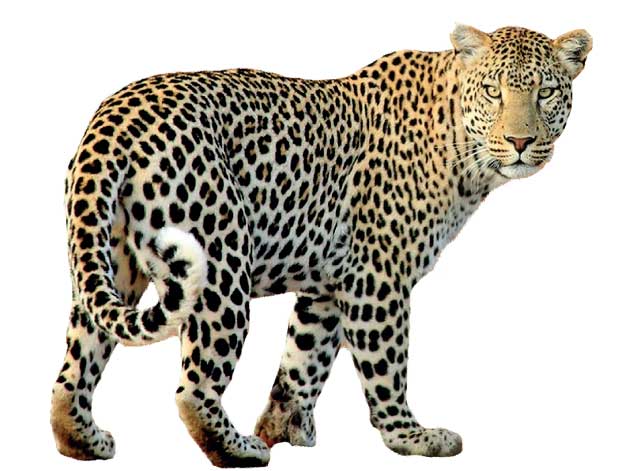
Panthera pardus kotiya
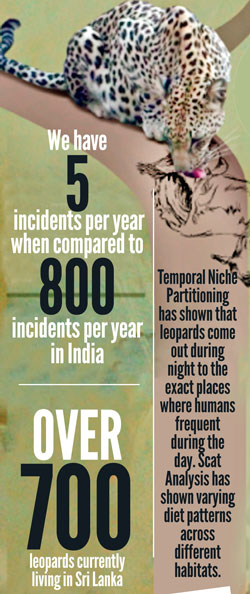 “It’s considered a big cat in the cat family,” said Dr. Kittle, explaining its appearance. “Leopards are mostly solitary beings, but they do get together for mating purposes and also in the case of mothers and cubs. They also communicate among themselves a lot, so they know what’s happening on the landscape even though we call them solitary. They are extremely adaptable which means that they can live in different habitats from almost deserted areas in the world to dense rainforests and even higher up in mountainous areas. Another reason for this change is that they are adaptable in their diet as well. Therefore they can eat prey that is larger and also smaller in size. According to our research, it shows that their diet vary across different habitats. Adaptability also allows them to live in close proximity to humans, without people knowing about their whereabouts. They are found within major city limits including Nairobi, Johannesburg, and Mumbai and in Sri Lanka they are found within Kandy city limits and so on,” added Dr. Kittle.
“It’s considered a big cat in the cat family,” said Dr. Kittle, explaining its appearance. “Leopards are mostly solitary beings, but they do get together for mating purposes and also in the case of mothers and cubs. They also communicate among themselves a lot, so they know what’s happening on the landscape even though we call them solitary. They are extremely adaptable which means that they can live in different habitats from almost deserted areas in the world to dense rainforests and even higher up in mountainous areas. Another reason for this change is that they are adaptable in their diet as well. Therefore they can eat prey that is larger and also smaller in size. According to our research, it shows that their diet vary across different habitats. Adaptability also allows them to live in close proximity to humans, without people knowing about their whereabouts. They are found within major city limits including Nairobi, Johannesburg, and Mumbai and in Sri Lanka they are found within Kandy city limits and so on,” added Dr. Kittle.
Distribution in Sri Lanka
According to research conducted by WWCT, the distribution of the leopard across the country is about 37% of its range. Historically it used to be spread throughout the island, but it’s no longer found in the South Western areas; it’s also not found in the vast agricultural lands towards Anuradhapura. “It still exists over about 50% of the island, but it actually lives within about 20% and that area is strongly linked with forest cover. This includes protected areas as well which are linked to forest cover because the leopard is reliant on prey. Therefore the forest cover is very important. This is similar in the dry zone, the Central hills and the wet zone as well. More limited populations are found in the lowland wet zones including Sinharaja forest. Therefore it definitely has decreased over the past few years,” said a concerned Dr. Kittle.
Therefore the forest cover is very important. This is similar in the dry zone, the Central hills and the wet zone as well. More limited populations are found in the lowland wet zones including Sinharaja forest
“We have done density analysis in Yala, Wilpattu, Horton Plains and in the peak areas and the highest density of leopards is in Yala,” Anjali added. “Horton Plains come next. There’s high density in the plains because of the sambar deer. If we were to expand that study to mountainous areas it would be lesser. The leopard density depends on the amount of prey available. The more prey available, the higher the leopard count in a given area. The leopard populations are quite reasonable in all these places. We get half the density in the peaks which aren’t protected and have tea landscapes. These are not the fringes of Peak Wilderness Sanctuary and the tea estates and Bogawantalawa Valley base. We still haven’t gone into Peak Wilderness itself. But we have taken chunks of it on the edges of the Bogawantalawa Valley. Currently we are working in Gal Oya. We have done our research in Ritigala, Wilpattu and in the Central Highlands in the Dunumadallawa Forest Reserve, Agarapathana and in many other different places. One interesting finding the WWCT has found is that in this part of the Central Hills in the Bogawantalawa Valley female leopards reside and reproduce in the ridge that separates the Maskeliya and Castlereigh Reservoirs. It’s a section of forests that’s there and there’s Peak Wilderness at the bottom. Therefore males move through tea estates to move in to their habitats. As a result we want that ridge protected as an additional conservation,” the duo said.
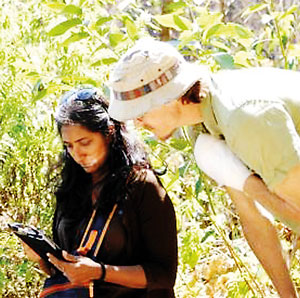 Endangered species
Endangered species
The animal was made endangered and was included in the IUCN Red List with the assessments carried out by WWCT. The Trust has kept it as endangered due to certain categories. These include :
Referring to the distribution of adult male and female leopards, Dr. Kittle confirmed that each study site differs and roughly for one adult there are three to four adult females. “Females have a range which is quite small. It’s only as big as it needs to be. Males and females are born at the same rate, but one might wonder what happens to all the males. When a male is about one and a half to two years old, they have to leave the mother. Hence, they have to go and look for other territory to establish themselves. But of course those territories have resident male leopards and they are not going to be welcoming. Therefore the young male is in danger and the mortality rate within that age is high. Animals are killed in conflict or they are more likely to go to dangerous areas where humans live in. Sometimes we find that leopards that are involved in killings are quite young,” he stressed.
Key findings
Speaking about some key findings in their research, the duo stressed on Temporal Niche Partitioning. “During day time they are inactive, but figures show that they frequent in areas where people are active in the day. This shows that they do it to coexist on the same landscape. Scat Analysis is another aspect that we are considering. In Kandy for example we found that they had a lot of porcupine in their diet. It’s a small area. It could be one or two females who would be specializing in it. In Yala we found that they are avoiding wild boar and going for sambar. In Wilpattu there’s a high focus on primates. We don’t only do the diet size, but we also look at prey density to find out what is available for the leopards. They are avoiding wild boar because they don’t want to be injured,” they said.
Anjali further said that the prey are very important to find out about the density of leopards. “There’s something called the Empty Forest Syndrome which is where you have a forest, but there’s nothing in it. This is mainly evident in China where there are forests which are dead quiet because everything has been hunted down. Not only do you need a forest, but you need a healthy forest. The fact that there are different diets in different habitats is interesting,” they added.
Preying on roaming dogs
Referring to the recent video footage of the leopard encounter in Hatton, Anjali says it looked like an incident from India. “Because of what they did five others received injuries. Everybody has to deal with it. Up in that area leopards are going wherever they can to avoid these situations. They’re using the landscape in a way that they could reduce these incidents. We have solid data from Scat Analysis which reveals that a very small percentage of domestic animals are being consumed. It’s happening on a small scale. It’s not that they are only eating dogs. Habitat loss could probably be an indicator that the leopards don’t have enough prey. So they might prey on free roaming dogs. If people don’t want their dogs to fall prey to these leopards, they should be kept indoors. The way people reacted during that encounter is not welcoming. They in fact asked for all those injuries,” said Anjali.
Adaptability also allows them to live in close proximity to humans, without people knowing about their whereabouts. They are found within major city limits including Nairobi, Johannesburg, and Mumbai and in Sri Lanka they are found within Kandy city limits and so on
Dos and Don’ts in a leopard encounter
Methods in which leopards are killed
Animal will be released to a vacant territory :Sooriyabandara
Speaking to the Dailymirror, Department of Wildlife Conservation Director General M.G.C Sooriyabandara said that the trap has already been laid. “Once the animal is trapped we will release it to a vacant territory. In moving forward we have to educate the people about how to react in such an encounter. Since they are territorial animals it’s difficult to control such sudden incidents. But we are trying to reduce encounters as much as possible.”
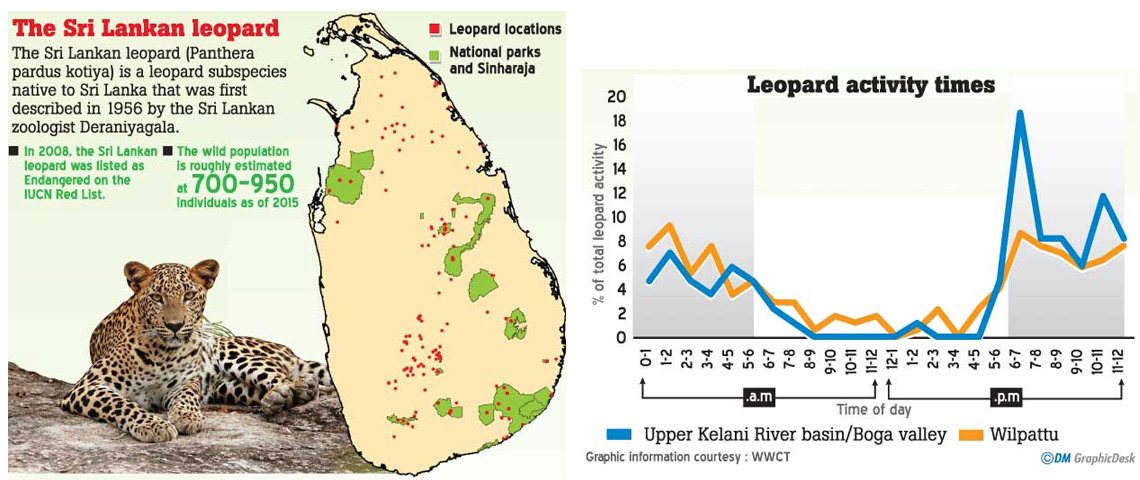
Conservation status
In their concluding remarks, Dr. Andrew and Anjali said that post-war the country is experiencing a rapid phase of development. “Sri Lanka has a big physical plan which is coming up in the future.
There’s Wildlife and a Forest department and all these avenues need to be looked at in one landscape. As far as conservation goes, all our research has to be plugged in to this plan. You cannot have economic development if your ecological development is going down. We need to protect the ridge which we mentioned earlier and that has already been proposed. Likewise, by protecting areas in which we find leopard activity, we will be able to have a positive growth in the distribution in future.”
23 Dec 2024 11 minute ago
23 Dec 2024 20 minute ago
23 Dec 2024 20 minute ago
23 Dec 2024 2 hours ago
23 Dec 2024 3 hours ago